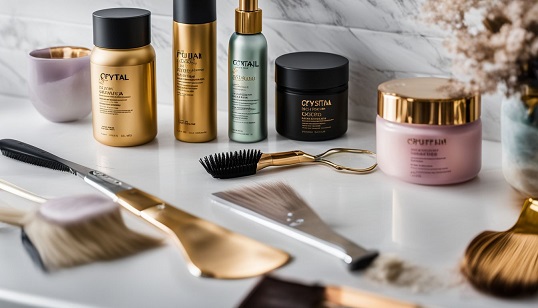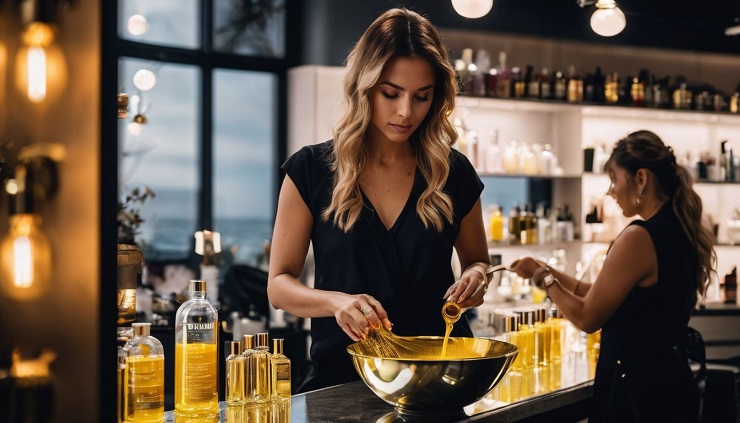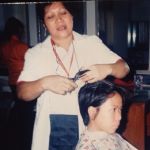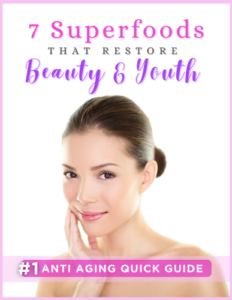Want to change up your look by experimenting with bleach on your natural black hair?
Bleaching can be a tricky process, and for dark hair, the risk of damage is greater.
This article will guide you through safe bleaching methods that won’t sacrifice the health of your locks. Learn how to bleach natural black hair safely.
Read on and learn how to transform into a blonde without losing that shine!
Table of Contents
Key Takeaways
Best Bleach for Afro Hair
Choosing the right bleach for Afro hair is essential as this hair type is generally more fragile.
The right products will help lighten your hair effectively without causing excessive damage.
Here are some highly recommended bleach products for Afro hair.
| Product | Description | Benefits |
| Wella Blondor Multi Blonde Powder Lightener | This bleach provides up to seven levels of lift and is designed to work on all hair types. | It minimizes the risk of hair damage and ensures an even blonde result. |
| L’Oreal Quick Blue High-Performance Powder Lightener | This product offers a super-strength formula that reduces brassiness and promotes a natural-looking result. | It provides fast lightening action that is effective yet gentle on hair. |
| Manic Panic Flash Lightning Hair Bleach Kit | Known for its vegan-friendly ingredients, this bleach kit can lift your hair color up to seven levels. | It includes a hydrating hair mask that helps maintain hair health during the bleaching process. |
| Clairol BW2 Powder Lightener | This lightener is designed to work in record time while providing effective results. | It minimizes hair breakage and results in a vibrant, even color. |
How to Bleach Dark Hair Without It Turning Orange
Bleaching dark hair without having it turn orange can be a daunting process.
But no worries. With the right steps and precautions, you can achieve a lighter hair color while retaining the health of your hair.
Here are key steps to follow:
1. Start by choosing a bleach powder that’s powerful enough for very black hair.
This prevents the natural pigment from turning your hair orange during the bleaching process.
2. Perform a patch test on a small strand of hair.
It’s crucial to pre-assess how well your dark hair lifts without turning into an undesirable shade of orange.
3. Prepare your skin before starting the bleaching process.
Apply petroleum jelly along your front hairline, ears, and neckline to protect them from harsh chemicals in the bleach mixture.
4. Mix the bleach powder and hydrogen peroxide.
Strictly follow the directions provided on the bleach kit.
5. Divide your hair into sections before you start applying bleach.
This ensures every strand gets evenly treated.
6. Begin applying the bleach mixture.
Start from the ends of your hair upwards towards your roots. Never apply directly onto the scalp or root areas.
7. Use a plastic bag or shower cap.
Cover all parts of your head that have been slathered in bleach mixture. This optimizes processing time.
8. Regularly check a small section of your bleached hair every 10 minutes.
Carefully monitor it until it reaches light yellow rather than dark orange or red.
9. Upon reaching the desired color after the required time, rinse out the bleach.
Carefully do so with lukewarm water first. Then use sulfate-free shampoo and deep conditioning treatments to keep strands healthy and vibrant post-lightening process.
My Hair Won’t Bleach Past Orange: What To Do
Exploring the solutions when your hair won’t bleach past orange can save you from a potential hair disaster.
Here are crucial steps to steer you back to the desired color:
1. Begin by using a blue toning shampoo.
This product can neutralize unwanted orange hues due to its opposing color on the color spectrum.
2. If shampoo alone doesn’t work, consider adding a toner for extra intensity.
A toner can further help in removing brassy tones and pushing you closer to lighter colors such as blonde or silver.
3. Re-apply bleach after two weeks.
This step might be necessary if your hair retains a strong orange cast that refuses to budge. Giving time allows your hair strands to recover before subjecting them to more bleaching process.
4. Conduct a strand test before applying more bleach.
By testing out bleach on a small part of your hair, you’ll have an idea about how long you need to leave it on without causing damage.
5. Protect your scalp with petroleum jelly prior to the bleaching session.
This simple act will shield your skin from harm and irritation caused by harsh chemicals in bleach.
6. Use a minimal amount of bleach in the initial application.
Avoid full saturation, since too much bleach can lead to a reddish or orange appearance, particularly in dark natural hair.
7. Finish with deep conditioning treatments.
After going through intensive lightening processes, it’s crucial to restore lost moisture and maintain your hair’s health.
Understand that achieving lighter hair may require several sessions.
It goes easier with patience and not rushing the process. Forcing it may lead not only to undesired color but also potential damage like brittle strands or even hair loss.
How Do You Bleach Black Hair Without Killing It?
Bleaching natural black hair without causing significant damage requires careful preparation and proper technique. Here are the steps to follow:
1. Prior to the bleaching process, apply petroleum jelly around your hairline, nape of your neck, and ears for skin protection.
2. Prep your desired bleach mixture with a hair bleach and 30-volume developer.
3. Thoroughly comb your hair to detangle any knots.
4. Use sectioning clips and divide your tangle-free hair into manageable sections.
4. Ensuring even application, use a tinting or mixing brush to apply the bleach mixture on each section of your hair.
5. Make sure you saturate all strands from roots to tips for an evenly lightened result.
6. After applying the mixture, cover your entire head with a shower cap.
7. Wait for the required time (as per instructions) before rinsing off the bleach thoroughly from your hair.
8. Deep conditioning treatments are crucial post-bleaching for maintaining hair health and minimizing damage.

What Bleach to Use for Natural Black Hair?
When it comes to bleaching natural black hair, choosing the right bleach is crucial.
There are different types of hair bleach available, such as lightener and powder bleach.
It is recommended to use a lower volume developer, like 20 volume or 30 volume when bleaching natural black hair.
This helps minimize damage and keeps your hair in good condition.
Additionally, seeking professional help for the bleaching process can ensure you achieve the desired results while minimizing damage to your hair’s health.
Remember to always do a strand test before applying any bleach to your entire head of hair.
How to Bleach African American Hair at Home
Bleaching African American hair at home may not be the easiest. But we got you. With the right steps and precautions, it is possible to achieve the desired results.
Here’s how you can safely bleach your hair at home:
1. Protect your skin.
Before applying any bleach, apply oil or petroleum jelly around your hairline to protect your skin from the dye.
2. Deep condition your hair.
Prior to bleaching, apply warm coconut or olive oil to your hair as a deep conditioner. This will help protect and moisturize your hair during the bleaching process.
3. Create a bleach bath.
Mix bleach powder with a 20-volume developer and a balancing shampoo to create a bleach bath. This will ensure even application and minimize damage to the hair shaft.
4. Apply the bleach evenly.
Use a timer when applying the bleach and make sure to cover all sections of your hair evenly. This will help prevent uneven lightening and ensure consistent results.
5. Avoid rushing the process.
It’s important not to rush the bleaching process or use a higher developer than recommended. Doing so can cause significant damage to your hair and scalp.
6. Thoroughly research and take precautions.
Bleaching natural black hair is risky, so it is crucial to thoroughly research and understand the process before attempting it at home. Take all necessary precautions, such as performing a strand test and using high-quality products.
Always remember that even the best bleach can cause damage if not used properly.
Take your time, use a lower developer to prevent excessive damage, and consider seeking professional help if you’re unsure about the process.
Be patient, enjoy the journey, and you’ll achieve that beautiful lightened Afro hair you’re dreaming about.
Conclusion – Bleaching Dark Hair at Home
Achieving a lighter hair color on natural black hair without causing damage is possible with the right techniques and products.
Use bleach powder and developer in a careful process. Protect the skin with petroleum jelly. Consider techniques like baby highlights or balayage.
With these, you can successfully bleach your hair while maintaining its health.
Remember to follow the instructions closely and take necessary precautions to achieve beautiful results without destroying your naturalb black hair.
FAQs – How to Bleach Natural Black Hair
Q: What is the best way to bleach natural black hair at home without damaging it?
A: The best way to bleach black hair at home involves using a high-concentration bleaching powder and leaving the bleach in your hair for a suitable amount of time, followed with conditioning treatments like leave-in conditioner or hair masks to keep your hair moisturized.
Q: How can I prepare my black curly or wavy hair for bleaching?
A: Preparing your black curly or wavy hair involves ensuring the condition of your strands before applying any product. Applying a good leave-in conditioner and avoiding other harsh products are essential first steps because bleaching works very deeply into the cuticles and could affect the curl pattern if not done properly
Q: Is using lemon juice as a natural remedy a good idea for lightening dark black hair?
A: While lemon juice might function as one of many natural highlight remedies, its effects will not be as dramatic as professional-grade bleaching products on dark-colored hairs like those found typically among Black women.
Q: What is the best way to lighten natural black hair without destroying it?
A: One of the best ways to lighten natural black hair without destroying it is by using bleach. Bleaching is a process that can help remove the dark pigments from your hair and create a lighter base for coloring or dyeing.
Q: How do I apply bleach to my hair?
A: To apply bleach to your hair, you should first prepare the bleaching product according to the instructions on the package. Then, section your hair into smaller sections and apply the bleach to each section using a brush or your gloved hands.
Q: How many bleaching sessions are required to lighten dark hair?
A: The number of bleaching sessions required to lighten dark hair depends on the desired hair color and the starting color of your hair. It may take multiple sessions to achieve the desired result.
Q: How should I condition my hair after bleaching?
A: After bleaching your hair, it is important to condition your hair to restore moisture and prevent further damage. You can use a deep conditioning treatment or a leave-in conditioner specifically designed for color-treated hair.
Q: How often should I wash my hair after bleaching?
A: It is recommended to wash your hair every 2-3 days after bleaching. This allows your hair to retain its natural oils and prevents it from drying out.
Q: Can I dye my hair immediately after bleaching?
A: It is generally not recommended to dye your hair immediately after bleaching. It is important to let your hair rest and recover after the bleaching process to ensure the health and integrity of your hair.
Q: Does bleaching damage my hair?
A: Bleaching can cause damage to your hair if not done properly or if the hair is already weak or damaged. It is important to use the right products and follow the instructions carefully to minimize the damage.
Q: How can I maintain blonde hair after bleaching?
A: To maintain blonde hair after bleaching, you can use purple shampoo to neutralize any yellow tones in your hair. Additionally, regular trims and deep conditioning treatments can help keep your hair healthy and vibrant.
Q: Can I bleach my hair at home?
A: Yes, it is possible to bleach your hair at home. However, it is important to follow the instructions carefully and take necessary precautions to minimize the risk of damage to your hair.
Q: How do I properly bleach my natural black hair?
A: To properly bleach your natural black hair, you should first prepare the bleach according to the instructions. Section your hair into smaller sections, apply the bleach evenly, and let it process for the recommended time. After rinsing the bleach, you can then proceed to the next step of achieving your desired hair color.



